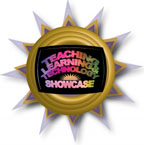K-State’s free Teaching, Learning, and Technology Showcase is 10 a.m.-1:30 p.m. Tuesday, March 13, in the K-State Student Union Ballroom. All faculty, staff, and administrators are welcome to attend. Pre-register at ksushowcase.wordpress.com/registration.
This is a Q&A with Debra Sellers, associate professor and extension specialist, School of Family Studies and Human Services.

What is “traumatic brain injury”?
The Brain Injury Association of America (BIAA) defines TBI as “an alteration in brain function, or other evidence of brain pathology, caused by an external force.” A way to think about this is in terms of something away from the body or not part of the body that hurts the brain. There are two key types: one is a bump, blow, or jolt to the head, and the second type is a penetrating injury.
How did you get involved in your work with TBI survivors? How did this project get its start at Kansas State University?
Jane Mertz Garcia, professor in Communication Sciences and Disorders, has been working with people with traumatic brain injury for more than 20 years, and I have many years of experience in working with older adults and people with disabilities. Older adults are affected by TBI more than other groups, along with young children and adolescents, although anyone of any age may experience a TBI. Additionally, Kansas is significantly affected by TBI, and has the highest fatalities rate of 33 reporting states. Continue reading “Debra Sellers to present on Traumatic Brain Injury project at Teaching, Learning, and Technology Showcase March 13” →




